How to improvise along to anything
Published on 26 January 2016
Improvisation on guitar. How to improvise guitar to different kinds of music using pentatonic scales and blues scales (major and minor).
From the Secret Guitar Teacher : http://secretguitarteacher.com/youtube/intermediate/electric/9ucGWDiKWXE/84317336-how-to-improvise-along-to-anything.php
PLEASE NOTE!
This video is an excerpt from a specific course that teaches a specific method of getting into improvising for beginners. A lot of comments are coming from viewers who don't seem to have got that point, so I have decided to add it here!! If you find the video boring, use the FAST FORWARD button or click through to my channel where there is plenty of more advanced videos to choose from.
Here's the abridged transcript:
Key-specific improvising is my way of describing the musical skill of improvising along to a piece of music, based mainly on the knowledge of the key that the piece of music is in.
It necessitates being thoroughly familiar with just six scales. The blues scale, Minor pentatonic scale, Natural Minor Scale, Country scale, Major pentatonic and Major scale. Of course it also requires that you can quickly and correctly work out the key of the song you are improvising to.
I am going to show you a game you can play to help develop this particular skill. To play this game you will need to access three websites. I'll show you now, how I use these websites to practice improvising against a wide variety of songs that are literally chosen at random.
First I visit the site Random and use their random number generator to generate 5 numbers between 1 and 500.
Next I go to the Rolling Stone Site where I scroll down to the list of lists. From this box I click on the one that says 500 Greatest Songs Scrolling down this page I come to a panel of number ranges and I find the one that covers my first randomly selected number. I click on that then click on the corresponding single number and make a note of the title and artist name for the song.
I then repeat the process for the rest of my randomly generated list of numbers.
Armed thus with a list of randomly selected songs I head off to the You Tube site. Where I use their search tool to find the first song on my list. Choose a studio version if possible -- less likely to have problems with tuning or sound quality...
OK so now your first task is to figure out the key. Here is a three-step process to do that. Here's a real live demonstration of this process in action:
OK, so once we have the keynote we need to choose a scale that helps us determine whether we are in a minor or major key. Now we can improvise over it. Maybe try out a couple of related scales.
Now you may hit snags with this. Some songs are a whole lot easier than others to work out. Songs with prominent guitar parts, for example are generally easier to work out than keyboard or orchestral arrangements.
A good tip is to turn up the bass, if you can, and use that as a guide to determine your keynote.
Sometimes, especially with older recordings or amateur recordings of live performances, you may find that the song is not in tune. You can of course, tweak your own tuning to compensate, but personally, I think it makes more sense just to skip that song and move on to the next one (unless it's a song you would particularly like to work on of course).
The last part of this lesson is aimed at professionals, would-be professionals and maybe those of you who, although you may have no aspirations to perform professionally, nevertheless want to hone your playing ability as close to perfection as possible.
Here, as I see it, are the layers involved in learning a song. Firstly, you need to know the basic structure of the song:
1. Work out the basic underlying chord sequence.
2. Work out the form of the song. This means how the song is structured the order of the different sections of the song for example, maybe something like: Intro, Verse Chorus Verse Middle Section Solo Verse Chorus Outro.
3. Write out a rhythm chart for the whole song showing time signature(s), bars, repeats, intros and outros.
4. Work out the melody of the song and make sure you can play this in two or three different positions on your guitar.
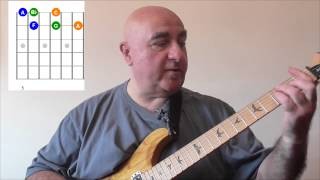 Soloing with Thirds and Sixths on the Guitar
Soloing with Thirds and Sixths on the Guitar
 Pentatonic Scales for the Guitar
Pentatonic Scales for the Guitar
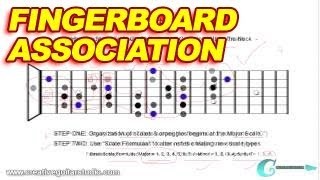 MUSIC THEORY: System for Fingerboard Association
MUSIC THEORY: System for Fingerboard Association
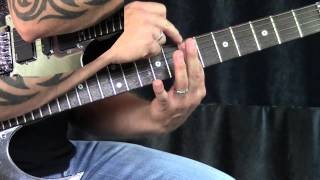 How To Harmonize A Lead Guitar Line
How To Harmonize A Lead Guitar Line
 Open Chords Pt 3 - C, A Minor & F - Guitar Lesson...
Open Chords Pt 3 - C, A Minor & F - Guitar Lesson...
 Wah Pedal Guitar Lesson With Michael Casswell | Li...
Wah Pedal Guitar Lesson With Michael Casswell | Li...
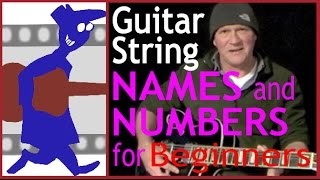 Guitar string names and numbers for beginners
Guitar string names and numbers for beginners
 Understanding Key Signatures - Part 3
Understanding Key Signatures - Part 3
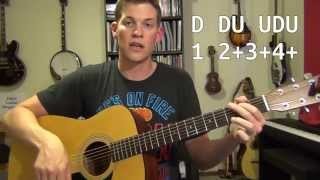 Intro to Guitar Strumming: How to Change Chords IN...
Intro to Guitar Strumming: How to Change Chords IN...
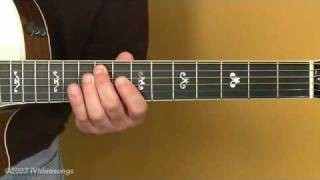 Circle of Fifths
Circle of Fifths







